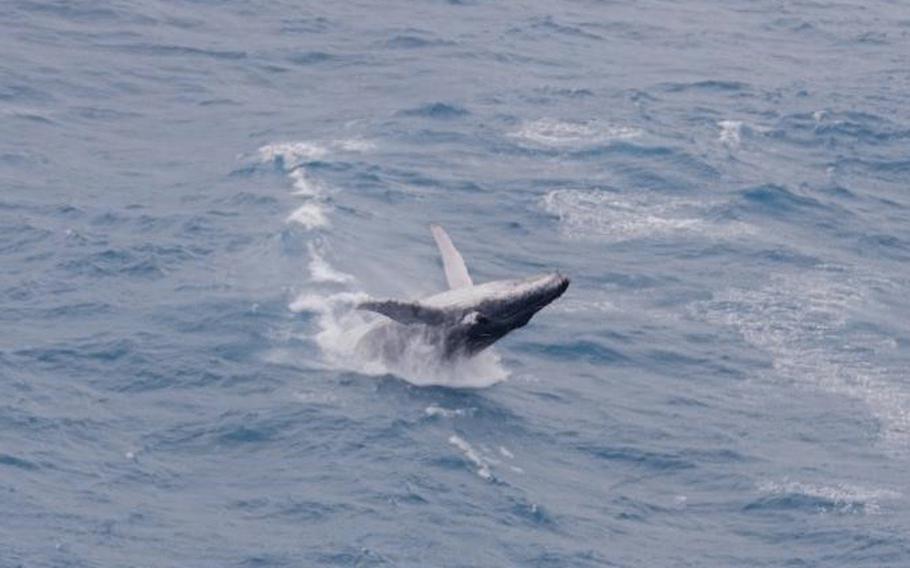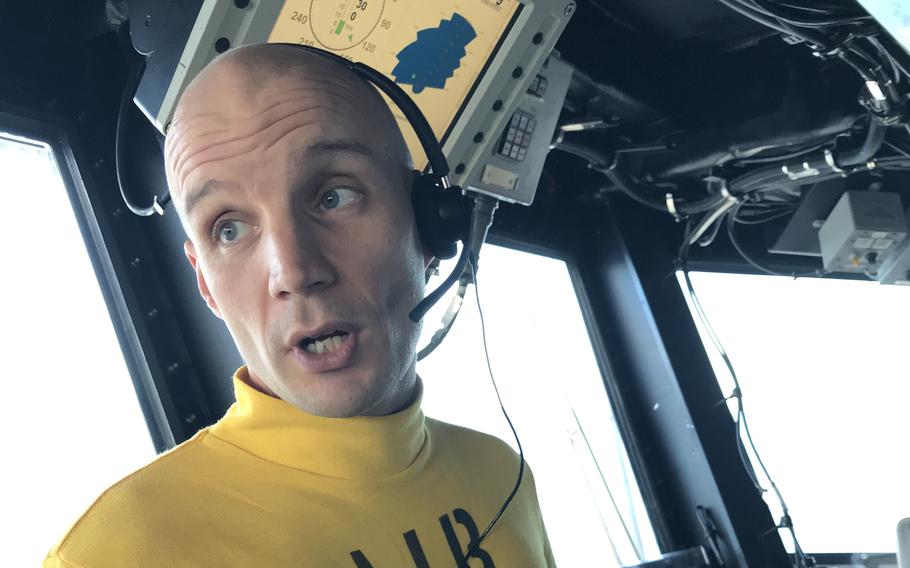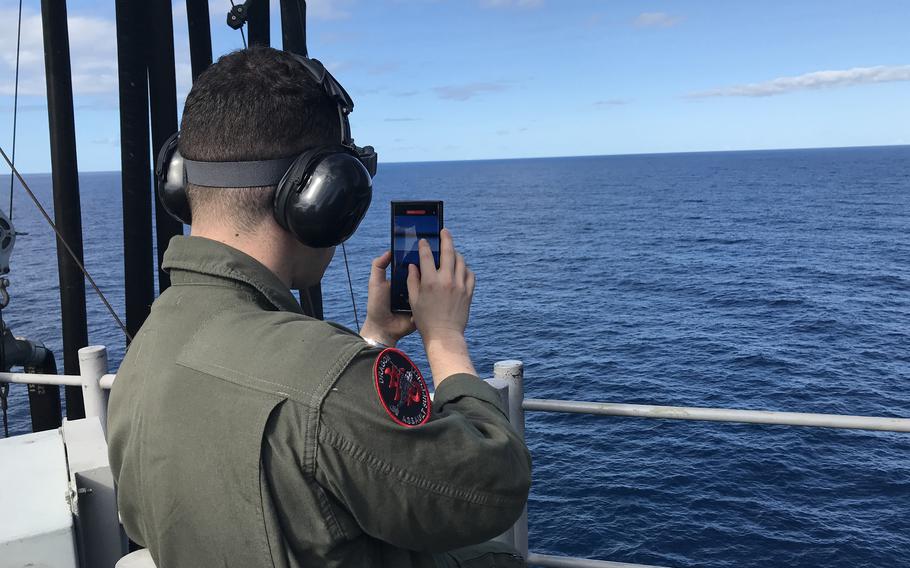
A humpback whale, photographed from a UH-1Y Venom helicopter, breaches in the Coral Sea, June 24, 2023. (Marcos Alvarado/U.S. Marine Corps)
ABOARD USS AMERICA IN THE CORAL SEA — Sailors and Marines scanning the sea from the deck of the USS America this week watched half a dozen or more whales breach near the amphibious assault ship and slap the water with fins and tails.
It’s a daily show, according to the America’s “air boss,” Cmdr. Joe Adams. On Monday, the MH-60 Seahawk pilot had a bird’s-eye view of the whales from a perch overlooking the deck where he guides aircraft by radio as they take off and land.
The America is part of an armada of vessels from the U.S., Australia, Japan and South Korea preparing to launch amphibious forces onto Australia’s eastern coast. The raid — against role-players acting as an enemy force — will be the grand finale of Talisman Sabre, 14 days of drills involving 30,000 troops, mostly from the U.S. and Australia, that kicked off July 21 and concludes Friday.
Dozens of species of whales and dolphins travel through the Coral Sea, according to Australian Marine Parks, a federal organization that manages the country’s 60 marine parks. Species swimming there include humpbacks, Bryde’s whales and dwarf minkes.
“For migrating humpback whales, the Coral Sea is also an important meeting location for breeding and calving,” the organization states on its website. “Its tropical waters act as a comforting blanket for baby whales, which are born without enough protective blubber to keep them warm in their Antarctic feeding grounds.”

Breaching whales in the Coral Sea put on daily shows for troops aboard the USS America, according to the amphibious assault ship’s “air boss,” Navy Cmdr. Joe Adams. (Seth Robson/Stars and Stripes)
“The whales are heading for breeding,” Yolanda Aay, a zookeeper at Rockhampton Zoo on Australia’s east coast, said Tuesday of the mammals that troops are encountering this week.
The animal expert, who cares for local wildlife, including kangaroos, crocodiles and koalas, said she recently went whale-watching at Hervey Bay, where much of the shore-based Talisman Sabre training is happening near Rockhampton.
“They will be traveling till September to have babies,” she said.
Humpback whales are curious, Aay added.
“In the boat, they will come up to you,” she said. “They’re huge and have such a huge territory … and they’re a social species as well.”
During mating season some species of whales breach more often than usual, according to Australian Marine Parks.
“This suggests that the males may be breaching to indicate a desire to mate or show off their physical prowess and youthfulness, which may help them land a mating partner,” the website states.
Marine sniper Sgt. Nathan Beagle, also aboard the America on Monday, said he’s spotted about eight whales from the ship, twice as many as he saw during a whale-watching trip he took from Hawaii.

A Marine films whales breaching near the USS America amphibious assault ship in the Coral Sea, Monday, July 31, 2023. (Seth Robson/Stars and Stripes)
Navy Lt. Kristen Azzam, the America’s flight surgeon, wore a “Crocodile Hunter” patch on her uniform as she waited in line for chow Monday in the officer’s galley. In addition to the whales she’s spotted from the ship, Azzam said she saw crocodiles, kangaroos and koalas while on liberty in Brisbane ahead of the exercise.
“I went whale-watching from Santa Barbara, [Calif.,],” she said. “It cost $100, but I didn’t see any whales,” she said. On Monday alone she saw half a dozen cetaceans near the ship.
Sailors are advised to report whale sightings so the America can take evasive action, if necessary, the warship’s public affairs officer, Navy Lt. Beau Nickerson said the same day.